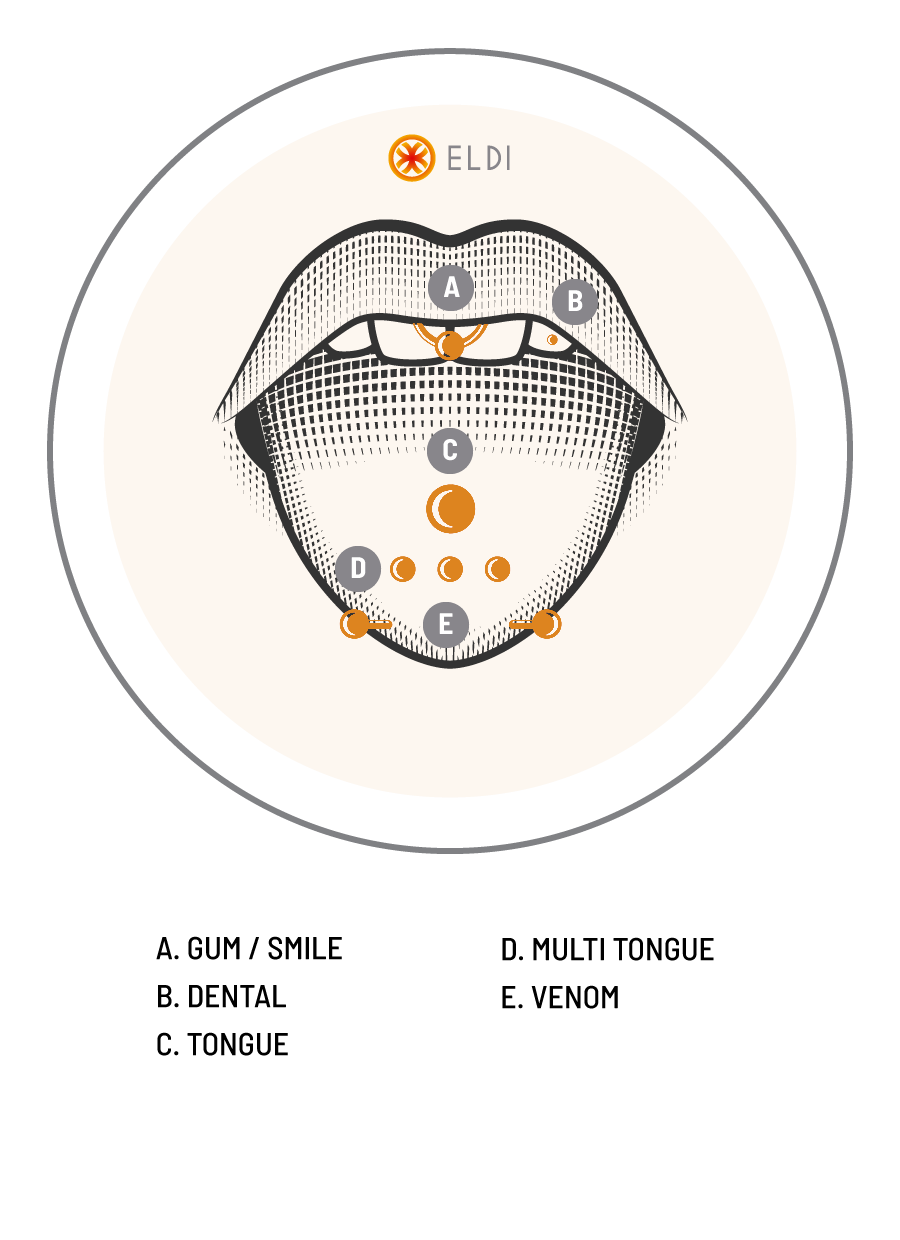Blog
Eldi Jewelry is an online piercing jewelry store, with biocompatible materials and quality guarantee.
Know the Risks of Any Body Piercing

Piercing can cause allergies, bleeding, pain, and infections. Choosing jewelry material with the best biocompatibility is one of the important precautions to consider.
Ignoring the risks increases the danger of preventable damage with proper information and care. In this article, we explain the risks according to body piercing professionals.
Risk of Pain and Inflammation
Pain is due to the movement of tissue during the piercing. Ignoring this movement can increase inflammation, causing ulcers and more pain. Consider the pain ranking based on the pierced area.
Inflammation begins shortly after the piercing, peaks in the first 3-4 days, and can last up to 10 days. Oral piercings can extend inflammation to the lymph nodes, increasing discomfort and pain.
Skin Risks from Abnormal Healing or Low Biocompatibility Materials
Allergies
Some metals can cause allergies. It’s crucial to choose the jewelry material carefully to avoid complications. Nickel and cobalt are the most problematic. Safer metals include stainless steel, gold, titanium, niobium, and platinum.
Hyperplastic Lesions and Epithelization
Piercings in soft tissues can heal abnormally, increasing tissue size.
The movement of the pierced tissue can contribute to this. Wounds may form epithelial tissue, making jewelry changes difficult.

Oral Area Risks
Oral piercings can cause various dental problems. Playing with the jewelry can cause fractures, fissures, and abrasions in the enamel, leading to dental hypersensitivity. They can also misalign teeth due to tongue muscle imbalance. Repeated trauma can cause gum recession, worsened by habits like smoking, increasing the risk of tooth loss.
Oral piercings can increase bacterial plaque accumulation, leading to the formation of gingival and salivary calculus. This excessive bacterial buildup poses an additional risk to oral health.
Infections from Body Piercings
Risks Related to the Use of Jewelry in Oral Piercings
Jewelry in the mouth can cause various risks. For example, sialorrhea, or excessive saliva production, can be triggered by contact with salivary excretors.
There is always the risk of aspiration or accidental ingestion of loose jewelry, which can cause dangerous situations like choking or damage to the digestive tract.
Additionally, oral piercings can generate galvanic currents affecting teeth restored with amalgams, sensitizing the tooth pulp.
Finally, tongue piercings can interfere with speech and swallowing. Changes in tongue movement can cause difficulties in pronouncing certain letters and affect chewing and swallowing food, requiring practice time to get accustomed.

To minimize or eliminate these risks, it’s crucial to have the supervision of a professional who handles hygiene and other aspects during the piercing. If you have doubts or fears, it is advisable to seek specialized medical follow-up.

Share and comment

Jewelry and its measurements according to the perforation

THE PIERCING AND PAIN RANKING

Best Material for Piercings: Gold, Titanium, Steel, or Pyrex


















